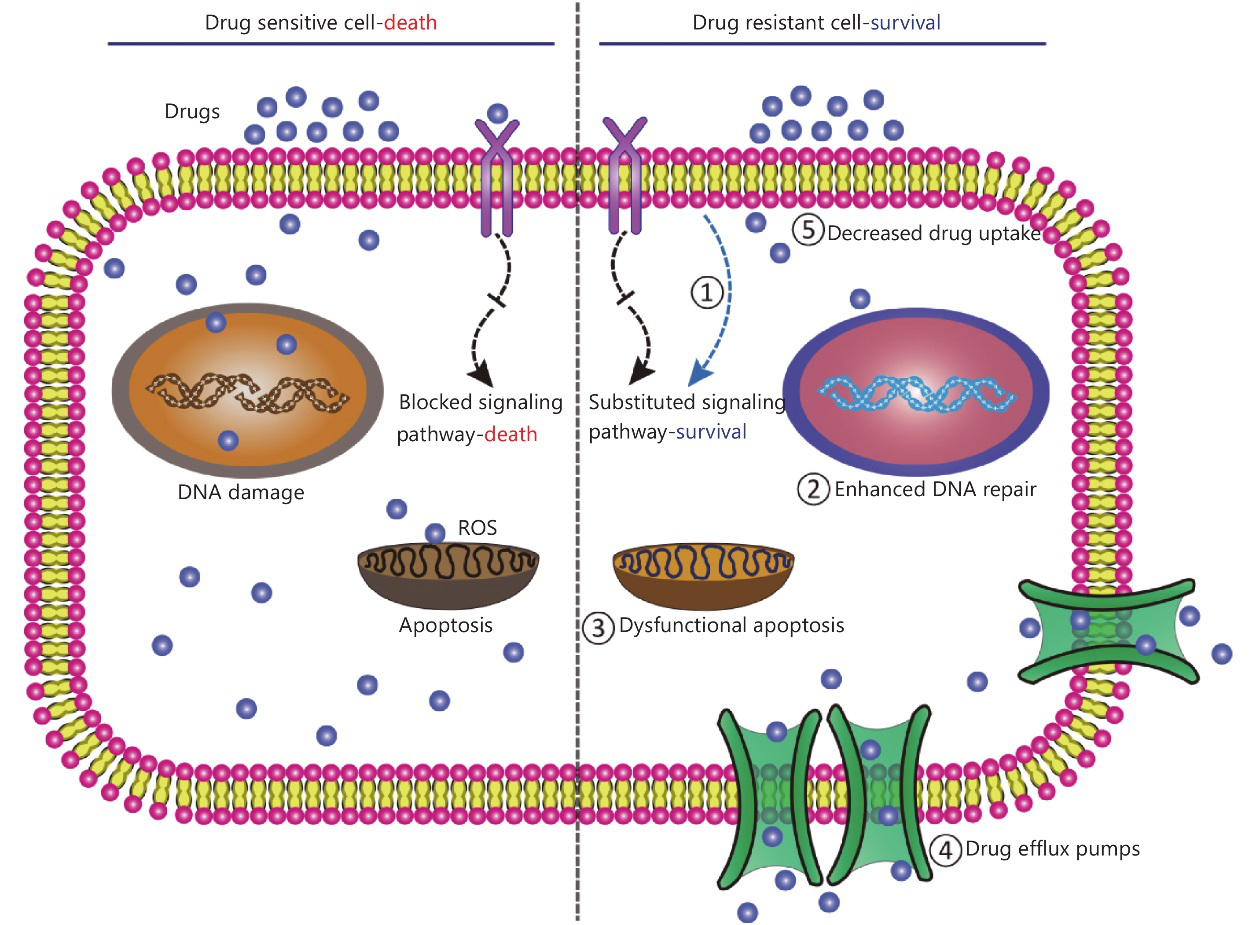Drug Resistant Cells
Publications describing the development of an anti-cancer drug-resistant in vitro model, which exhibited acquired resistance to a chemotherapy drug, was first published in 1970. However, publications in this research field usually place little emphasis on how the drug-resistant cell lines were established in the laboratory. The development of drug-resistant cell lines can take anything from 3 to 18 months in the laboratory and many decisions are taken along this process, such as the choice of parent cell line, dose of selecting agent, and the treatment interval.
Laboratory drug-resistant cell models are established with the aim of understanding the underlying mechanisms of toxicity and resistance to chemotherapy agents. Cells are usually grown continually in the presence of drugs and highly drug-resistant clones are selected from a mixed population. Drug dosages tend to be high and the therapeutic doses escalate over time.
Laboratory drug-resistant cell models are generally more stably resistant and therefore easier to maintain in culture for an ongoing research project. Levels of resistance are often higher, so the molecular changes associated with the resistant mechanism are greater and easier to identify. It is common to have difficulty to develop stable clinically relevant drug-resistant cell lines. However, a comparative selection strategy of multiple cell lines or multiple chemotherapeutic agents alleviates this risk and gives insight into which agents or type of cell line develops resistance easily.

Figure 1. Mechanism involved in tumor MDR.
H69 Drug-resistant Cell Model
We have derived a number of human lung cancer cell sublines with acquired resistance to cytotoxic drugs. They are being used as model systems for studying resistance circumvention strategies. Small cell lung cancer subline H69/LX4 is a classic multidrug resistant (MDR) cell line that hyper-expresses P-glycoprotein and shows a drug accumulation deficit. Although MDR phenotype induced by doxorubicin are not generally resistant to cisplatin, there is no doubt that both inherent and acquired resistance to cisplatin are significant clinical problems. Therefore, we set out to produce cisplatin-resistant lung cancer cell sublines by treating cells in culture with cisplatin. Over a prolonged period, we succeeded in deriving sublines H69/CPR, which can grow continuously in cisplatin. Such cell lines are extremely valuable for studying basic mechanisms in the laboratory and also for developing molecular and antibody probes for these mechanisms which can be subsequently used to investigate clinical material.
A2780 Drug-resistant Cell Model
Ovarian cancer is the most lethal gynecological cancer in which chemotherapy-based treatment plays a fundamental role as the first-line option. However, development of drug-resistance is a critical and poorly understood problem in ovarian cancer treatment. For many years, the A2780 series of ovarian cancer cell lines have been effective in vitro tools for cancer research. A2780/cis and A2780/ADR are resistant to cisplatin and doxorubicin respectively. They play an important role in the study of cancer biology and chemo-resistance, enabling the search for new treatments. Drug resistance has been quantified in these cell lines by using IC50 values, the dose of a drug causing a 50% inhibition in normal cell growth.
MCF-7 Drug-resistant Cell Model
MCF-7 human breast cancer cells provide a useful in vitro modeling system for studying hormone-responsive breast cancer as they contain receptors for estrogen and progesterone that induce the synthesis of specific proteins and increase their rate of proliferation. MCF7/TAMR-7 is a breast cancer cell line resistant to tamoxifen, and the parental cell line is MCF7/S0.5. MCF7/TAMR-7 has been established from a clone of cells that survived for a long time under 1 µM of tamoxifen. Tamoxifen is the most widely used drug for the treatment of hormone-dependent breast cancer. However, primary or acquired resistance to tamoxifen severely limits its clinical efficacy. The MCF7/TAMR-7 cell line is a good model to study the signaling pathways, which are the major drivers of tamoxifen-resistant growth.
Description: The drug resistant cell line MOR/0.2R has been derived from the parent line, MOR...
Description: The revertant lung cancer cell line COR-L23/R23- was generated by growing the doxorubicin-selected...
Description: The cell line COR-L23/R is a multi-drug resistant (MDR) sub-line derived from the...
Description: The cell line COR-L23/CPR is a drug-resistant variant of COR-L23. The line was developed...
Description: COR-L23/5010 has been derived from the parent line, COR-L23 by continuous exposure...
Description: The MCF7/TAMR-7 Cell line is a breast cancer cell line resistant to tamoxifen. Tamoxifen...

